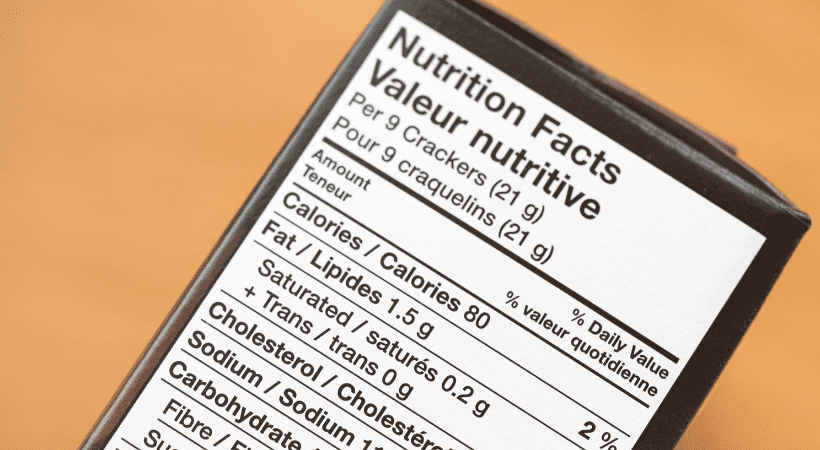Country of Origin Labelling (CoOL) Explained
Country of Origin Labelling (CoOL) Explained
Country of origin labelling is an essential aspect of food labelling compliance often referred to as ‘CoOL’. With international trade evolving rapidly and consumers becoming more discerning in their choices, food business operators need to understand how to correctly apply CoOL to their products to remain compliant.
In this article, we explore the intricacies of country of origin labelling, it’s significance in food manufacturing, the legal implications of non-compliance, and how Ashbury can guide businesses in navigating these regulations.
Table of Contents
What is country of origin labelling?
Country of origin food labelling tells consumers where a food product originates from and where it was processed. This can be communicated through labels such as ‘made in’, ‘product of’, and ‘grown in’. Each of these label serves a distinct purpose:
‘Made in’ – generally referring to where the product was manufactured or processed.
‘Product of’ – Indicates the country where the primary ingredients are from.
‘Grown in’ – refers to the cultivation location of the primary ingredients.
Why is CoOL important?
Consumer Trust and Informed Decisions
Modern consumers are increasingly conscious of their buying choices. Research has shown that origin information “has a substantial impact on food choices” and that “consumers generally prefer domestic to imported and local to other origins”. By clearly displaying this information on products it ensures that consumers are making an informed choice.
Consumers might associate the quality and safety of food products with their place of origin. For instance, certain regions may be known for their high-quality agricultural practices, while others might have had recent outbreaks of foodborne illnesses. By clearly indicating the origin, consumers can make informed decisions based on their knowledge or perception of different regions.
Some consumers may also be concerned about the ethical and environmental implications of their purchases. They might prefer products from countries with strong environmental regulations or humane treatment of animals, or products from local farmers that have less ‘travel miles’ associated. Country of origin labelling allows these consumers to align their purchases with their values.
Legal Compliance
Under FIC Regulations, indicating the country of origin or place of provenance is a legal requirement where its absence is likely to mislead consumers as to the true origin of the product. For example, a pizza packaged with Italian flag colours may lead the consumer to think it is made in Italy. If Italy is not the country where it is made, the country of origin will need to be declared on pack.
For some categories, such as meat, it is mandatory to state the country of origin or place of provenance – a crucial piece of information required on a food label by law,
Mislabelling, whether intentional or accidental, can result in severe penalties, sanctions, and legal action. More than just the financial repercussions, businesses risk damaging their reputation, which can have long-lasting negative effects on brand loyalty.
Trade Considerations
Correct and transparent labelling can also influence tariffs, trade relations, and access to certain markets. Some trade agreements or tariff relaxations are based on the country of origin. Incorrectly labelling products can therefore result in higher tariffs, or even exclusion, from certain markets.
What are the requirements for country-of-origin labelling?
The requirements for country of origin labelling on different commodities are governed by several different regulations. Links to these are summarised in GB, Assimilated Regulation EU 2018/775.
In summary, it is made up of:
Country of Origin / Place of Provenance
Businesses must ascertain the country of origin, which involves determining where the product last underwent a treatment or process resulting in a significant change. For example, processing liquid milk into milk powder. The biggest challenge in determining the country of origin is for products that contain ingredients sourced from multiple countries. Such products should have labels that reflect an accurate representation of its primary origin, avoiding ambiguity.
For example, with a product like a chocolate bar, the cocoa might be sourced from Ivory Coast, the sugar from Brazil, and the manufacturing might take place in Belgium. The country of origin declaration may look like: ‘Produced in Belgium using Cocoa from the Ivory Coast’ depending on where the primary ingredients came from (see below).
To get this right, it’s essential to understand and differentiate between the origin of ingredients and the location of final production. Remember, assembling ingredients from various countries in one location does not necessarily mean the final product can use a ‘made in’ status of that location. This would depend on the degree of processing that has taken place. For example, the blending of dry ingredients to create instant muesli would not be considered ‘significant change’.
Primary Ingredients
Primary ingredient means an ingredient or ingredients of a food that represent more than 50% of that food. Or, which are usually associated with the name of the food by the consumer. If a food’s country of origin or place of provenance differs from its primary ingredient, this distinction must be clearly labelled. For instance, pork sausages made in Britain using pork sourced from another country should not be labelled “British pork sausages”. Instead, the label should read “Produced in the UK from [imported][country of origin] pork”.
What products does COOL apply to?
For products such as beef, country of origin labelling is a mandatory requirement in GB in line with UK Assimilated Regulation EC 275/2007.
Other products, such as composite ready meals, often use this on a voluntary basis. Those who choose to use it must comply with the rules laid out in the aforementioned regulation.
It should also be used for any products where its absence could lead consumers to be misled. This is stipulated in UK Assimilated Regulation EU 1169/2011 which says:
“The indication of the country of origin or of the place of provenance of a food should be provided whenever its absence is likely to mislead consumers as to the true country of origin or place of provenance of that product”.
In all cases, the indication of country of origin or place of provenance should be provided in a manner which does not deceive the consumer. It should also be used according to clearly defined criteria which ensure a level playing field for the industry.
What challenges does COOL present for businesses?
Differentiating between country of origin and primary ingredients:
As mentioned, the complexities of global supply chains can sometimes blur the lines for origin labelling. With ingredients sourced from various countries, determining the ‘primary origin’ can be a challenge and can lead to failure to comply.
Where there are multiple processes involved, such as meat production:
Country of origin labelling is mandatory for meat products, and is made more complicated due to the various stages of processing – where the animal was born, raised and slaughtered will influence the labelling requirements.
Other references to origins, such as artwork:
If other aspects of the label suggest a different origin, the country of origin declaration must be clear and prominent. This includes associating a food product with specific landmarks, flags, colours, or country names. Adhering to these guidelines ensures full compliance with food labelling regulations concerning country of origin.
Confusing country of origin labelling with RoO:
Rules of origins (RoO) are more significant post BREXIT and have left some brands confused. They have a different purpose to country of origin, relating to duties, taxes, market and trade agreement protection and are not for the benefit of consumers and product transparency.
Impact of FBO address on country of origin:
The defined criteria for country of origin labelling does not apply to indications on a label related to the name or address of the food business operator (FBO). For example, a UK distributor may be the responsible FBO importing and selling the product, but this will not influence the country of origin labelling
What Are Geographical Indicators such as PDOs and PGI’s and are they the same as Country of Origin Labelling?
Food, drink and agricultural products with a geographical connection or that are made using traditional methods can be registered and protected as intellectual property. Product names can be granted a ‘geographical indication’ (GI), if they have a specific link to the place where they are made. GI protection guarantees a product’s characteristics or reputation, authenticity and origin. It protects the product name from misuse or imitation enables consumers to trust and distinguish quality products while also helping producers to market their products better.
While PDOs and PGIs are not strictly related to CoOL, because origin is at the heart of their very existence, they fall into the broader category of ‘origin labelling’. Despite this, it’s important not to confuse them with ‘CoOL’ as they are governed by different regulations.
Products that are under consideration or have been granted GI recognition are listed in geographical indications registers. The registers also include information on the geographical and production specifications for each product.
There are three categories of geographical indicators:
- PDO – protected designation of origin this is for food and wine, where every part of the process takes place in the specific region.
- PGI – protected geographical indication, this is for food and wine, where a product is made in a particular region and method, but the raw materials are not necessarily from that region.
- GI – geographical indication this is for spirit drinks, where at least one of the stages of distillation or preparation take place in the stated region, raw materials do not have to originate from that region.
How can Ashbury Help with Country of Origin Food Labelling?
With our extensive experience and global expertise in food labelling regulations, Ashbury can assist manufacturers in navigating the complex world of food labelling compliance. Our team can help you establish your country of origin based on your product information and ensure that the country of origin on your food labels is displayed accurately, leaving no room for ambiguity.
We guarantee seamless compliance, saving your business from potential pitfalls. Interested in ensuring your products’ labels are clear and compliant? Get in touch with the team at Ashbury for guidance and support in country of origin food labelling.

Author: Janet Dalzell
My 30 years of experience in food regulatory and technical roles is invaluable in providing clear answers to client's queries. My background covers all foods but particularly botanicals, produce, dairy and beverages, in addition to which I have a keen interest in sustainability.
Next reads
The Peanut Diaries: School and Social Occasions
The Peanut Diaries: Navigating Social Events and Celebrations with Food Allergies
The Peanut Diaries: A Parent’s Journey to Uncovering their Child’s Allergy
Redefining Healthy: What the FDA’s New Rules Mean for Food Labels and Nutrition Claims
Keep up to date with our latest insights
Subscribe to our mailing list to stay in touch with the latest news, insights and updates from Ashbury




